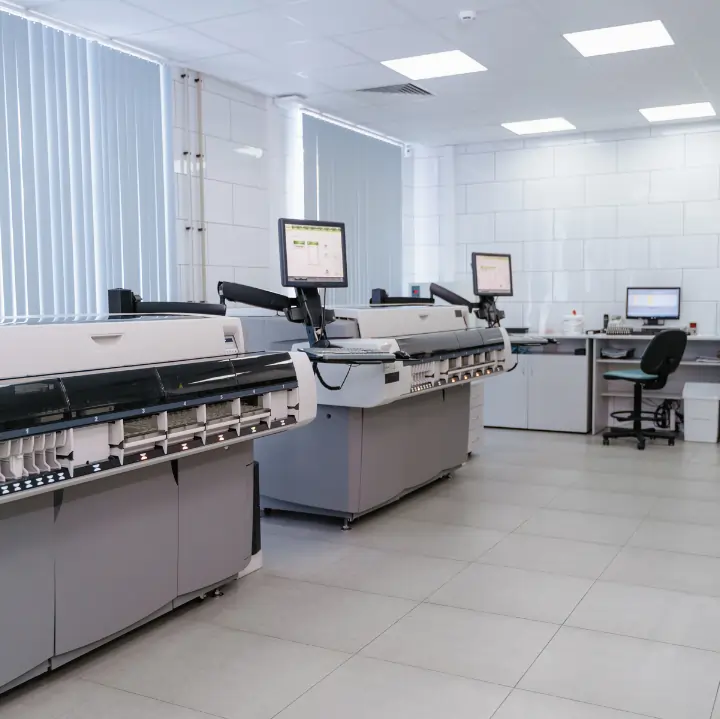Strategic Refinancing: Unlocking Hidden Value in Your Business Assets
In today’s competitive business landscape, optimizing your financial structure can be as crucial as operational efficiency. Asset refinancing stands out as a powerful yet often overlooked strategy that allows businesses to unlock capital tied up in existing equipment, vehicles, and machinery without disrupting day-to-day operations.
Asset refinancing essentially involves reassessing and restructuring the financing terms on equipment or assets your business already owns. This financial strategy can create immediate capital injections, improve cash flow, and potentially reduce monthly payments—all without sacrificing the use of essential business equipment.
When Does Refinancing Business Assets Make Strategic Sense?
Interest Rate Improvements
Market conditions fluctuate continuously, and today’s refinancing rates may offer significant advantages compared to your original financing terms. Even a modest percentage reduction can translate to substantial savings over the remaining term of your financing agreement.
Example: A construction company refinancing a £500,000 equipment loan from 7.5% to 5.5% could save approximately £10,000 annually in interest payments alone, creating immediate positive impact on profitability.
Business Growth Opportunities
When expansion opportunities arise requiring additional capital, refinancing existing assets can provide the necessary funding without taking on entirely new debt structures. This approach leverages the equity already built in your business assets.
Strategic Advantage: Using refinancing to fund growth maintains your existing banking relationships and credit facilities intact for future needs, essentially creating a parallel funding stream.
Cash Flow Optimization
Extending the term of your financing agreement through refinancing can reduce monthly payments, creating breathing room in operational budgets during challenging business cycles or seasonal fluctuations.
Industry Application: Manufacturing businesses with high-value production equipment can strategically refinance to align payment obligations with production schedules and revenue patterns.
Consolidation Benefits
Businesses with multiple financing agreements across various assets can streamline their financial management through consolidation refinancing, potentially securing better overall terms while simplifying administration.
Efficiency Gain: Reducing five separate equipment finance agreements into one comprehensive refinancing package can eliminate hours of administrative work monthly while potentially improving terms.
The Asset Refinancing Process: What to Expect
Asset Valuation
The refinancing journey begins with professional valuation of the assets under consideration. Experienced lenders will assess:
- Current market value based on equipment type, age, and condition
- Remaining useful life expectancy
- Maintenance history and records
- Technology obsolescence factors
- Secondary market demand
Equity Assessment
Lenders calculate the available equity in your assets by comparing current valuation against any outstanding financing balances. This equity represents the potential capital that refinancing could unlock.
Formula: Available Equity = Current Asset Value – Outstanding Finance Balance
Term Structuring
Unlike initial equipment financing, refinancing offers greater flexibility in structuring terms, as the asset’s performance history provides additional data points for risk assessment.
Key considerations include:
- Aligned repayment schedules with business cash flow patterns
- Seasonal payment adjustments for applicable industries
- Balloon payment options for capital preservation
- Fixed vs. variable rate considerations
Documentation Requirements
Expect to provide:
- Asset ownership documentation
- Existing financing agreements
- Maintenance records
- Business financial statements
- Tax returns (typically 2-3 years)
Industry-Specific Refinancing Strategies
Manufacturing Equipment Refinancing
Manufacturing businesses with substantial capital equipment can benefit from specialized refinancing approaches:
- Technology upgrade pathways incorporated into refinancing terms
- Production-linked payment schedules
- Maintenance package inclusions
- End-of-term replacement options
Fleet Refinancing Options
Transportation and logistics companies can optimize their vehicle financing through:
- Fleet-wide consolidation refinancing
- Fuel efficiency upgrade allowances
- Telematics integration funding
- Staged replacement scheduling
Construction Equipment Refinancing
Contractors and construction businesses face unique equipment challenges addressed through:
- Seasonally-adjusted payment structures
- Project completion-linked terms
- Equipment utilization monitoring
- Refinancing linked to public infrastructure funding cycles
Maximising Refinancing Value: Expert Strategies
Timing Considerations
Market timing can significantly impact refinancing outcomes:
- Interest rate trend monitoring for optimal entry points
- Business cycle positioning to leverage stronger financial statements
- Asset value fluctuation awareness in specific equipment categories
- Regulatory change anticipation affecting certain asset types
Negotiation Leverage Points
Working with experienced asset finance specialists provides negotiation advantages:
- Competitive market analysis providing insight into optimal terms
- Multiple lender relationships enabling genuine competition
- Industry-specific benchmarking data
- Term customization expertise
Tax Optimization
Refinancing structures can deliver tax benefits when properly structured:
- Interest deduction timing optimization
- Capital allowance considerations
- Balance sheet impact analysis
- Depreciation schedule alignment
Common Refinancing Myths Debunked
Myth: “Refinancing Resets Depreciation Schedules”
Reality: Refinancing typically doesn’t alter the depreciation schedule of the underlying asset for tax purposes, as you’re modifying the financing structure, not acquiring a new asset.
Myth: “Refinancing Always Extends Total Payment Periods”
Reality: While term extension is one refinancing approach, many businesses use refinancing to maintain current payoff timelines while reducing monthly payments or extracting equity.
Myth: “Only Struggling Businesses Refinance”
Reality: Strategic refinancing is increasingly utilized by financially healthy businesses as a proactive capital management tool, often funding expansion rather than addressing distress.
Case Study: Strategic Asset Refinancing in Action
Northeast Manufacturing, a precision components manufacturer, had invested £1.2 million in CNC equipment four years earlier. With 60% of the original loan repaid and interest rates having dropped significantly, they explored refinancing options.
Working with an asset finance specialist, they:
- Secured professional valuation confirming equipment value at £950,000
- Identified outstanding loan balance of £480,000
- Structured refinancing to release £280,000 in equity while maintaining similar monthly payments
- Utilized the released capital to fund a new production line expansion
- Maintained their existing banking facilities untouched for working capital needs
The refinancing strategy enabled business expansion without additional bank debt, preserved existing credit lines, and positioned the company for a 28% revenue increase in the following fiscal year.
Conclusion: Refinancing as a Strategic Growth Tool
Asset refinancing represents more than a simple financial restructuring—it’s a sophisticated business strategy that can unlock hidden value in your existing assets, creating capital for growth initiatives while potentially improving monthly cash flow.
By working with experienced asset finance specialists who understand both equipment values and industry-specific needs, businesses can develop refinancing strategies that align with both immediate capital requirements and long-term growth objectives.
Whether seeking to fund expansion, optimize cash flow, or simply improve the terms of existing financing arrangements, strategic refinancing offers a versatile financial tool that leverages the value already created within your business assets.






